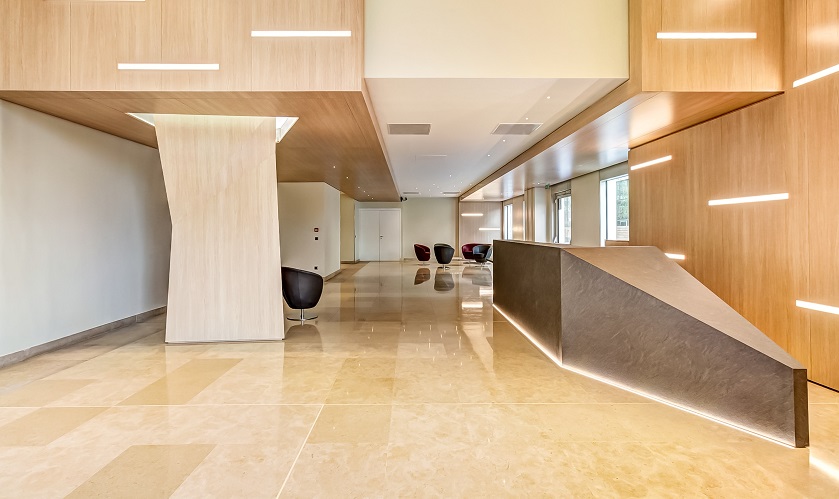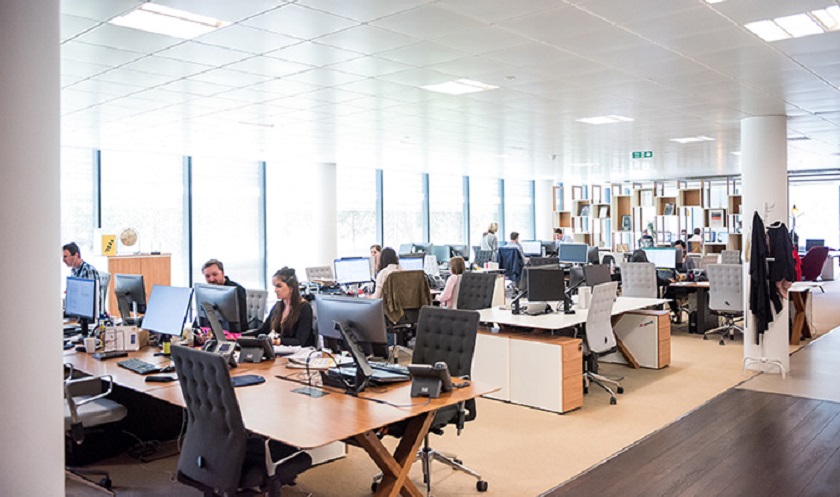In the latter half of the 20th century, the development of oil and gas industries, as well as the growth of sectors like finance, telecommunications, and construction, led to the establishment of modern office spaces in the Middle East.
Skyscrapers and commercial complexes became symbols of economic progress and modernity in cities such as Dubai, Abu Dhabi, and Riyadh.
The Middle East’s office market is expected to double over the next five years (Source: JLL, a global real estate services firm), highlighting the need for innovative workspace management solutions.
In such a scenario, how are businesses in the Middle East approaching workspace management?
A survey conducted by YouGov found that 70% of employees in the UAE believe that their workspace affects their productivity (Source: Global Workplace Analytics).
The survey also revealed that 67% of employees in the UAE feel that their workspace is outdated and in need of modernization.
As a result, for businesses in the Middle East, digital transformation has emerged as a critical choice for growth – They need to invest in workspace management system for space optimization with a clear objective – To make their offices smart.
Advantages of workspace management solutions
One of the main advantages of workspace management solutions is the increased efficiency. By automating manual processes, businesses can save time and money.
Furthermore, these solutions provide businesses with real-time insights into their workplace, enabling them to make better-informed decisions about how to allocate resources.
Another advantage is increased collaboration among employees. By providing them with better visibility into available resources, businesses can encourage collaboration and create a more cohesive working environment.
Below, we have noted some benefits.
Improved productivity:
By optimizing the workspace, businesses can create a more productive environment for their employees.
Imagine a Bank that implemented a workspace management system. The system would help the bank to identify unused space and reallocate it to other purposes, thus saving money on rent and utilities. Employees were more likely to feel that they had a comfortable workspace, which would lead to an increase in productivity.
Cost savings:
Innovative workspace solutions can help businesses reduce costs by optimizing space utilization.
Say, a multinational technology company implemented a comprehensive workspace management system. This would result in improved space utilization, which would bring down real estate costs.
Energy Savings:
By integrating a workspace management system with the building automation system (BAS), an organization can automatically switch on and off lights, ACs, etc., in a particular working space based on occupancy which is determined by sensors. In effect, this saves energy in the form of electricity.
Now imagine, a certain IT company’s office spaces are often left with lights and air conditioning on when nobody is present, leading to unnecessary energy consumption. By integrating a workspace management system with the building automation system (BAS), the organization can automate energy-saving measures.
Improved employee satisfaction:
A comfortable workspace can improve employee satisfaction, leading to better retention rates and a more engaged workforce.
For example, say if a multinational bank implemented a workspace management system, it would allow employees to book desks and meeting rooms in advance. This will give employees more control over their workspace and reduce the amount of time they would have otherwise wasted looking for a place to work. The system would also provide employees with insights into how they were using their workspace, which would help them to be more efficient.
Competitive advantage:
By implementing innovative workspace solutions, businesses can differentiate themselves from their competitors and attract top talent.
What if an investment group implemented a workspace management system? It would help them to improve their ability to attract and retain top talent. Employees would also be more satisfied with their workspaces because the system would make it easier for them to find those spaces that are best suited to their needs. This improvement in talent acquisition and retention would give the group a competitive edge over their rivals.
IoT and smart building technology in workspace management
IoT and smart building technology are playing an increasingly important role in workspace management. These technologies enable businesses to monitor and optimize energy usage and air quality in real time, creating a more sustainable workspace.
For instance, IoT sensors can be used to monitor the occupancy of workspaces, allowing businesses to optimize their use of available resources. Smart lighting systems can be used to adjust lighting levels based on occupancy, reducing energy consumption and creating a more comfortable working environment.
Challenges in adopting workspace management solutions
The adoption of workspace management solutions also poses some challenges. Organizations need to invest in robust infrastructure, ensure data security and privacy, and provide adequate training and support for employees to embrace these technologies smoothly.
Also, you need to talk to your vendor to receive support whenever you need it. This is very important.
Conclusion
Innovative workspace management solutions have the potential to influence the way work is carried out in offices in the Middle East. From desk booking software to IoT sensors, these solutions can transform traditional office spaces into more efficient and agile environments.
A workspace management system like ecobook can provide businesses with the tools they need to optimize their space, improve collaboration, and enhance productivity. Needless to mention, both big and small businesses will benefit from it.





